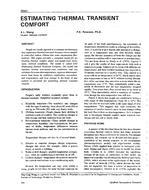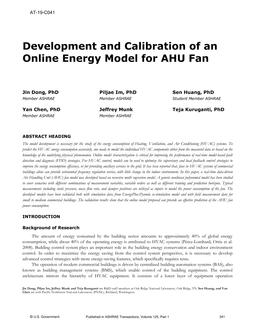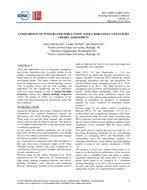Natural airflow due to wind has been utilized since antiquity to provide both fresh air and indoor summer thermal comfort in warm humid climates.
Lack of suitable existing wind pressure data has resulted in the use of wind tunnel data from studies of solid models. This practice results in the elimination of the velocity pressure component at inlet openings and a corresponding source of error in estimates of flow. Another source of error is the effect of inclined wind incidence on discharge through inlet openings. Studies of these effects are cited.
Current numerical methods for estimating the airflow rates through buildings with large openings are based on orifice flow theory. These methods do not account for internal flow losses due to obstruction of flow by furniture or surface friction. Friction losses can be significant in long corridors as local velocities often exceed 200 ft/min (1 m/s).
Resistance-based flow theory, currently used for estimating mine ventilation, is suggested as a means of including losses due to orifices, obstruction by furniture, bends, and surface friction in a single simple flow equation. Flow conditions discussed include estimates of airflow through sequential orifices between inlet and outlet openings. Methods are provided for determining airway resistances from existing dynamic loss and discharge coefficient data. Calculation of the equivalent resistance of combined parallel airway branches and resistance associated with friction losses along surfaces of airways are discussed.
Many flows through buildings take the form of complex interconnected branching network flows. Application of the resistance approach to the iterative solution of complex network flows is described and areas in need of further research are identified.
Units: Dual
Citation: Symposium, ASHRAE Transactions, 1988, vol. 94, pt. 2, Ottawa
Product Details
- Published:
- 1988
- Number of Pages:
- 9
- File Size:
- 1 file , 920 KB
- Product Code(s):
- D-OT-88-13-2


